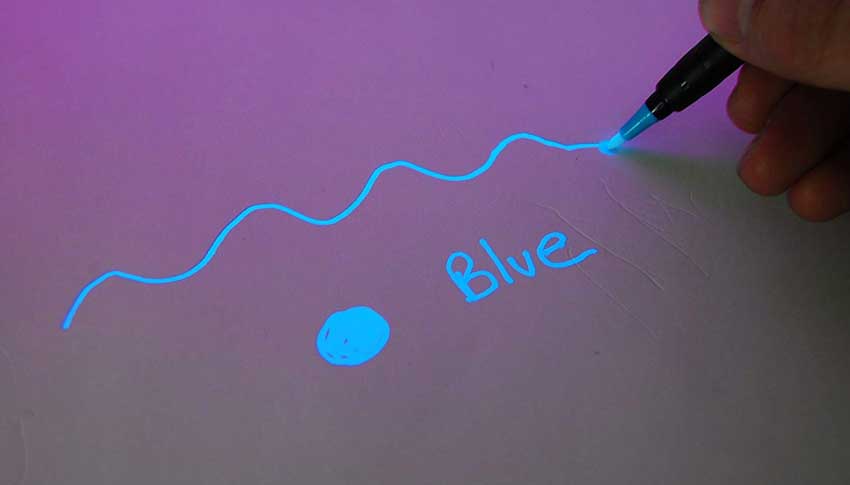Table of Contents
Do you know the story of the invisible ink ? Do you know what it is or why it was created? Actually this term may be unknown to many people. It may be that you have not even heard or used it, maybe you know it as a security ink. If you do not know what we are talking about, do not worry, today we will tell you the story of the invisible ink and some generalities or curiosities about secret writing.
What is invisible ink?
The invisible ink or security ink as some prefer to call it, is a substance that becomes invisible when it comes in contact with a surface, this can be immediately or disappear soon after.
This type of ink is used mainly by security and intelligence professionals to hide confidential or very important information that should only be seen by specific people who know this substance very well and know how to reveal the message without any problem or complication.
Types of invisible ink
The invisible or security ink can be divided into 2 categories, one with organic fluids, and the other are sympathetic or synthetic inks, let’s talk a little about each of them before knowing their history well.
1. Organic inks
These use natural elements such as vinegar, lemon juice, milk, onion juice or even blood sweat and saliva. The idea is that to develop a reaction with these and achieve decoding the message, it is necessary to use heat from fires, light bulbs or anything that radiates enough heat for these substances to react and allow their reading.
2. Sympathetic or synthetic inks
These inks are more complicated and require more effort, they also require more than one chemical for their creation, and if that is not enough, a specific reagent (usually more chemicals) is needed to develop the message.
The history of invisible ink since ancient times
As you should be suspecting, one of the most frequent uses since the beginning of the times of the invisible ink has been in wars. It was usually used to send hidden or encrypted messages, so that if they were intercepted by enemies there would be no risk of leaking information.
In addition to this, the ancient Greeks and Romans also made use of this ink for the writing of books and manuscripts, we are talking about 2,000 years ago. As if that were not enough, in the Renaissance the invisible or security ink was used to write love texts and political consignments.
The history of the invisible ink does not stop there, during the revolution in the war between the United States and the British, emblematic and well-known figures in the world of public relations such as George Washington, they developed their strategies and communicated with messages written both with organic as well as synthetic inks. This, in addition loaded of signs and letters that were used like secret codes to know with what type of material the letter would leave in seen its message. For example, if an F appeared in some corner of the message this would mean that they had to reveal the hidden message with fire, if on the contrary something as strong as acid was needed, the letter A would be shown in any other corner, thus with all security They could send their fight strategies.
If we talk about the First and Second World War and the Cold War, we can see that the use of invisible ink became something more technical and developed, as the fighters began to use laxatives and antipyretic remedies to make better invisible inks. In addition to this, they developed much more advanced inks with copper sulphate, iron and cobalt salts that allowed them to read the messages with ammonia and sodium carbonate, they discovered solutions that allowed them to see the letters in brown, thus facilitating their reading.
In short, very interesting and sophisticated tactics for the time, which let us see the ingenuity of our ancestors, and although after the end of the cold war began to digitize these messages with invisible ink, currently prevails the use of this, although not with so much apogee, it is not abandoned. For example, recently a British Muslim was found with a book written in invisible ink containing the contact information of al Qaeda terrorists.
The story of the invisible ink is more interesting than you thought right? It is incredible and very curious to see how the need for protection leads us to develop methods as interesting as sending hidden messages to the human eye, messages that can only be read by those who have knowledge of the handling of these elements.
